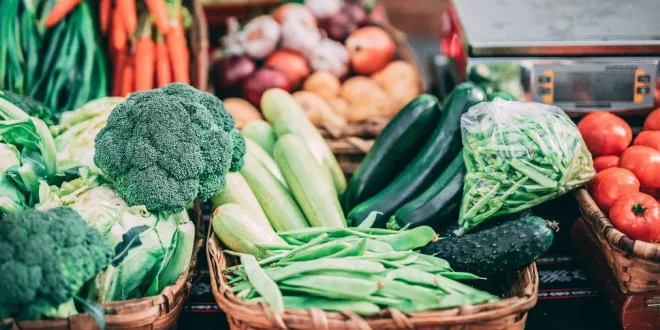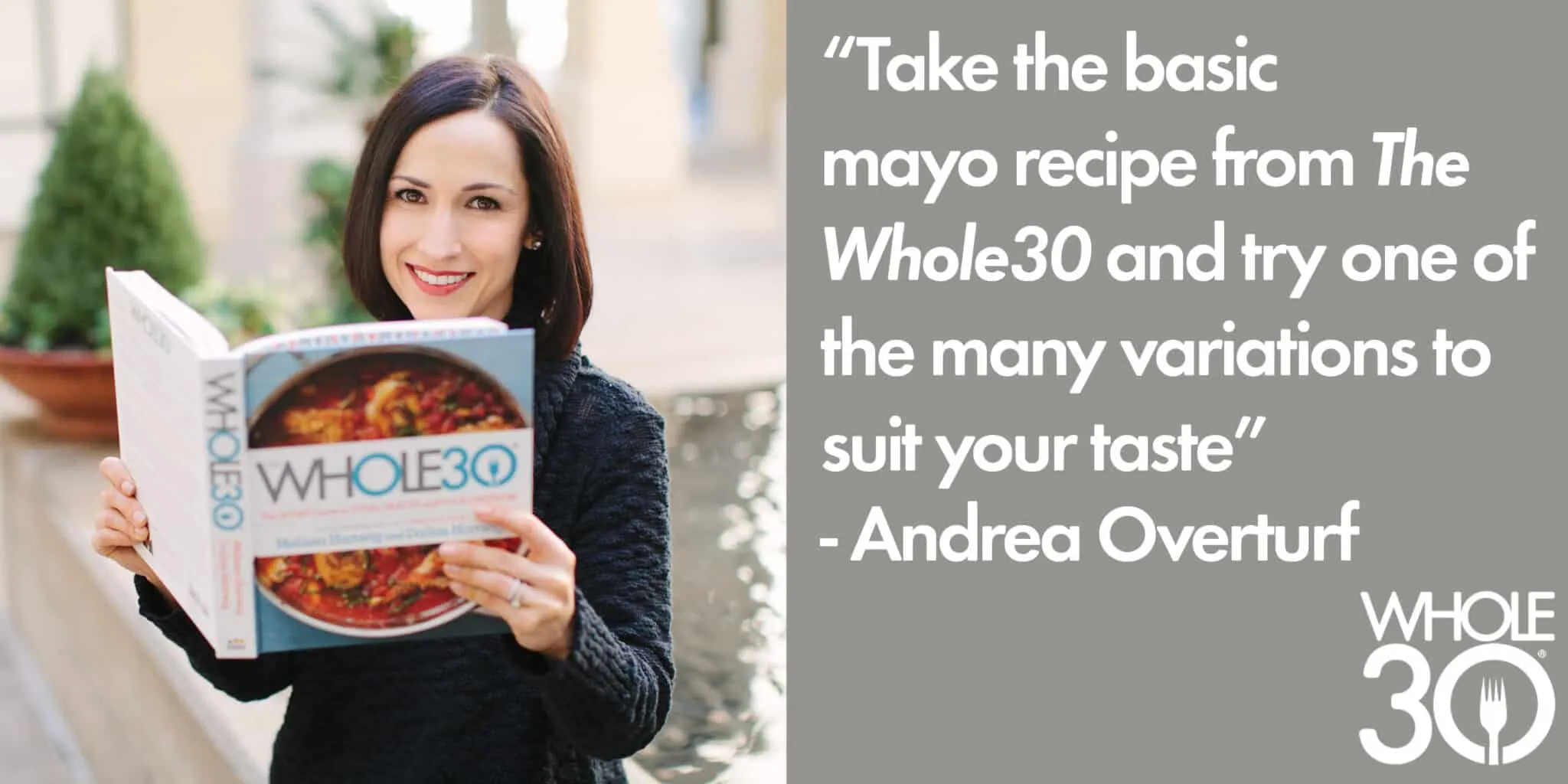This post is from Andrea Overturf of Loubies and Lulu. Updated October 2020 by Stephanie Greunke, RD. Have your own Whole30 budgeting and grocery shopping tips to share? Join the conversation on Facebook and Instagram.
October 2020 Update:
We originally posted this article years ago and the main message still holds true. Grocery shopping and meal prep can be hard, but doesn’t need to be! There are ways to make it work even if you’re on a budget, feeding a large family, working full-time or have picky eaters. We’ve updated this blog post to include more budgeting strategies we’ve learned over the years from Whole30ers like you.
Today we’re sharing some of our best grocery budgeting tips along with an updated version of our shopping list. In support of our diversity, equity, and inclusion goals, we expanded the Whole30 shopping list to feature foods that are compatible with the Whole30 program while also being more inclusive of cultural, ancestral and traditional diets than our previous shopping list.
“The Whole30 shopping list has been a foundational resource for our community for more than a decade. While it’s impossible to create an exhaustive list of every animal protein, vegetable, fruit, herb, or spice, the original shopping list I created back in 2010 was, in retrospect, centered very much on my own experience as a white person shopping at health food stores. As our community has grown and my own awareness around diversity, inclusion, and accessibility has increased, I realized that the narrow-focused nature of our shopping list was a barrier to entry to the program.
My goal for the program has always been to make the Whole30 accessible to all who want to complete it, and part of that is making sure those coming to the Whole30 from different cultures immediately see their foods represented in our resources. I hope our newly revised and more inclusive shopping list makes you and those you bring into the program even more excited to take on our life-changing self-experiment, knowing you can still honor your heritage and cook with your family’s favorite ingredients while enjoying all of the benefits our program has to offer.”
Melissa Urban, Whole30 Co-founder / CEO
When I began my first Whole30, I had little interest in cooking. It wasn’t something I enjoyed, simply a necessary chore. Logistically speaking, I didn’t anticipate what a huge change the Whole30 would bring. (If I had, I may have been too intimidated to take it on!)
In my pre-Whole30 life I “cooked.” That mostly meant making meals with store-bought packaged foods and healthy to-go options from the prepared foods case at the store. To say the Whole30 completely changed the way I grocery shop is an understatement.
The Whole30 helped me learn to love cooking from scratch. I’m not the most skilled chef, but I can honestly say I now enjoy it. Preparing a nutritious meal for my family can be a stress relieving experience and a ritual I look forward to on most days. It’s also become an activity my daughter and I do together, spending quality time. She loves to research and prepare new recipes!
But before you get to cooking, you have to grocery shop. Today I want to share six shop-smart strategies that have worked for our family. Yes, it can be expensive to eat real food, but it doesn’t have to be. With the right plan and selective with spending, you can make the Whole30 work for your needs and budget.
Plan Your Meals, Make a List
It takes some organization and getting used to, but developing a meal planning habit will save you time in the long run. How many times each week do you catch yourself thinking, “What am I going to make tonight?” How many times do you run to the store for missing ingredients because you’re cooking on the fly? Plan your meals for the week ahead of time, choosing dishes that use similar ingredients and flavors, so you can maximize your grocery haul. You will waste less by using all of your perishable ingredients for the week.
You can find Whole30 recipes in one of the Whole30 cookbooks; on the Whole30 Recipes Instagram feed; or by Googling Whole30 versions of your family’s favorite meals. (If you use this last tactic, double check to make sure the recipe is actually Whole30 compatible.) Once you’ve compiled your meals for the week, create a shopping list to keep you on track during your visit to the grocery store.
Did you know: A 2020 study out of Penn State found that US households, especially those following healthier diets and with higher-incomes, waste about 1/3 of the food they purchase every year. You can save money and be more mindful of food waste by using a shopping list and sticking to it.
Bonus tip
Need more help? We’ll get you started with our detailed 7-day meal plan in The Whole30: The 30-Day Guide to Total Health and Food Freedom. Or, check out Autumn’s 7-Day Meal Plans that offer quick, budget- and family-friendly options.
Shop Smart
You don’t need to shop at specialty food stores, and you don’t need to make more than one stop during your grocery runs (unless you want to). Nearly every grocery store has fresh produce and meat, which are the foundation of a Whole30 meal. Focus most of your energy shopping the “perimeter” of the grocery store, and look for weekly specials and sales on fruits, vegetables, and meat. If you live in an area that doesn’t have easy access to fresh fruits and vegetables, compatible canned and frozen are great options that you can feel proud of.
Remember, purchasing grass-fed and organic items aren’t part of the Whole30 rules, so if those items aren’t in your budget, that’s okay. Do the best you can within your resources. There is no such thing as a “perfect” Whole30.
Budget-friendly stores like Aldi and Walmart also carry of compatible options at great prices. Aldi has expanded their organic vegetable selection in recent years, and select Walmart stores carry a large selection of Whole30 Approved products including our frozen bowls.
Be willing to spend extra time initially at the store, scouting things out and reading labels. Download the Common Additives Cheat Sheet to use as a quick reference guide when you are reading labels and come across an ingredient you don’t recognize. After a trip or two to your local grocery store, you’ll know your favorite Whole30 compatible finds and you won’t have to spend as much time in the aisles reading labels.
You might like to fit one or two Whole30 Approved or compatible convenience items into your budget, like a jar of Approved mayo or a Whole30 salad dressing. Many regional chain grocery stores have a natural, organic, and/or gluten-free sections where you may be able to find items like this. Stock up when the items your family likes best go on sale. (Can’t find what you’re looking for? Most stores can do special orders for customers.) If you live in a small town, check to see if there’s a local natural foods store, farmer’s market, or co-op you may not have noticed before. Check the bulk items aisle, where you may be able to find pantry staples like almond flowers, nuts, and seeds.
Bulk retailers like Costco and Sam’s Club also carry a fair amount of Whole30-compatible selections, plus high quality produce and meat. If you have access to one of these stores, it’s worth a trip in store to figure out if a membership will serve your family’s needs.
Bonus tips
Ordering certain pantry items (like coconut aminos, ghee, or almond flour) on Thrive Market is a great strategy that can save time and money. If you’d like to use Thrive Market, but the membership fee is a barrier, check out their Thrive Gives program. They offer memberships to low-income families, students, teachers, veterans, and first responders. Finally, keep your eye on the Whole30 Approved Instagram feed or subscribe to our Wholesome newsletter to hear about special offers and discount codes from Whole30 Approved partners.
Batch Cook
If you’re feeding a large family or a small family with voracious appetites (or even if you’re just feeding yourself!), consider doubling (or tripling) your recipes. This allows you to use leftovers for lunch or dinner the next day. Purchasing ingredients in bulk is often more economical, especially when it comes to things like nuts or specialty ingredients like coconut aminos and coconut oil.
Bonus tip
You can add veggies to bulk up meat-based dishes to extend portions and save money. Try adding diced mushrooms, cauliflower rice, or other vegetables to ground meat-based dishes.
Keep It Simple
Be realistic about the time you have to prep and cook, and plan your meal choices accordingly. For example, I only have time to cook two to three nights per week (Sunday, Tuesday, and sometimes Wednesday). What works for my family is to grocery shop on Sunday and do a big meal prep on Sunday night to start the week. We cook up most of our proteins, hard boil eggs, and chop veggies for the week. I usually make a batch of baked sweet potato wedges and maybe a breakfast frittata or casserole to have for breakfast throughout the week. I like to make at least one flavorful sauce or dressing to jazz up otherwise plain meals.
With all of these things prepped, it’s easy to throw together delicious meals at home or on the go, and I can be sure we’re using all of our fresh produce for the week with no waste.
If this method of a meal prep day doesn’t work for you, check out Whole30 Certified Coach Autumn’s “Make Something Extra” meal prep method.
Bonus Tip
Check out our exclusive 5-Ingredient recipe collection, designed to help you plan tasty, simple, Whole30-inspired meals that the entire family can enjoy.
DIY: Make It At Home
Save money on dressings, sauces, and condiments by making them yourself. It’s not as difficult as you think, and it opens up a world of flavorful possibilities. It’s an easy way to get more bang for your grocery buck, and it’s a nice addition to your culinary toolbox.
Start by taking the basic recipe for mayo from The Whole30, then try one of the many variations to suit your taste. (If you don’t like mayo, don’t immediately count it out. I never liked mayo myself, but I love the Whole30 version.) You can add it to chicken, tuna, or egg salads, or to make flavored aiolis and sauces. Homemade ranch dressing has also become a favorite in our house, and it never lasts long because we use it for salads or as a dip for veggies or meat (or anything, really).
Bonus Tip
Debating whether to buy premade condiments? Whole30’s DIY time/cost analysis breakdown is great for those of you who love to crunch the numbers.
Always know that if you’re short on time or capacity, you can grab a bottle of Whole30 dips and dressings, exclusively from Thrive Market!
Build Your Pantry Slowly
One of the biggest mistakes I made during my first Whole30 was purchasing too many specialty spices, oils, and condiments before I knew if I had a use for them. Because of my enthusiasm and curiosity, I wanted to try all the “new to me” approved and compatible items. One time, I ended up going over our regular grocery budget for the week by $100.
These things can be expensive, so find a recipe first. Add new items in slowly and buy only what you need for your recipes for the week. Pre-Whole30, my spice rack was sparse and most were even expired when I checked because I rarely used them. Now, it’s brimming and I have to replace our spices all the time.
Bonus Tip
Stick to simple recipes and the basics when it comes to your Whole30 meals. Skip recipes with expensive items you will only use once or twice. If you plan your meals around protein, veggies, healthy fat, and fruit that you love, you’re doing it right.
Recognize Your Spending Trade-offs
Keep in mind that for 30 days, your food and grocery dollars will be spent differently. You’ll be focusing on purchasing the most nutrient-dense foods. You will be removing and/or not purchasing things that aren’t a value for your body, nutrition-wise. For example, you won’t be buying cereal or granola for breakfast, you may decide to purchase eggs instead. Nutrient-wise, the eggs are a much better bargain for your budget!
For most families, once you take the pre-packaged convenience foods, carry-out, and alcohol, you will find money in your grocery budget that you didn’t know was there. (This was especially true in my case.) You may also find you’re no longer buying your sweetened coffee or tea drinks, smoothies or shakes, or juice beverages, saving money there, too.
Bonus tip
Take advantage of the great resources Whole30 has made available to you in this collection of FREE printable grocery guides and lists. They will help you navigate your first few grocery store runs.
Remember to keep it simple, and keep your focus on doing the most with the foods that you can afford. Happy grocery shopping!

















